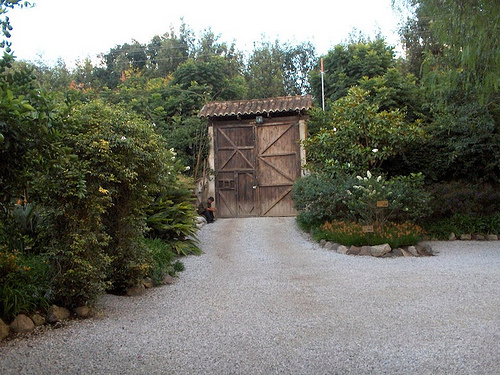The Gatekeeper
Sometimes the ride from Guate city (la capital) to LAG takes a bit longer than expected and then there is not enough time to visit some of the interesting places. Or at least you end up finishing your pie de ayote or pie de higo by closing time, and then between getting some clay lantern and marimba CDs and paying for the plants you are taking back to la capital you end up having to ask the gatekeeper to let you out.
We can imagine names such as don neto or don chepe, always diminutives, showing a familiarity that may or may not be there, and at the same time a respect towards someone at our service. In Guatemala (and LAG is Guatemala) there is a marked difference, if not in ethnic group, at least in social class, between “us” and gatekeepers. Maybe it is the same worldwide, maybe it only exists inside my head.
Gatekeepers exert their power, limited as it might be, by being there to help us. Catholics might have something right by portraying one of their founding fathers, St. Peter, as the gatekeeper of the heavens. More earthly gatekeepers usually are there to open the door so we can continue our journey and leave the dreamland we are visiting. Gatekeepers have the keys to the outside world and the keys to inner worlds beyond our right to roam free. They let us in, they let us out.
I’ve been reading an online novel by Ronald Flores called Una cabaña en Atitlán (in Spanish) and it reminded me of this picture and this post I’ve been wanting to write. The central character in the novel (a middle-class ladino from la capital) has a couple of encounters with Mayan people, one of them that opens and closes a door for him. A door to another life, to the possibility of escape, to the possibility of change. Beautiful doors (and windows) are abundant in LAG and probably represent more than architectural elements…
Can you guess where was this picture taken?
How are usually the gatekeepers where you live or where you come from?
[gmap]
© 2009 – 2020, Manolo Romero Escobar. All rights reserved.

